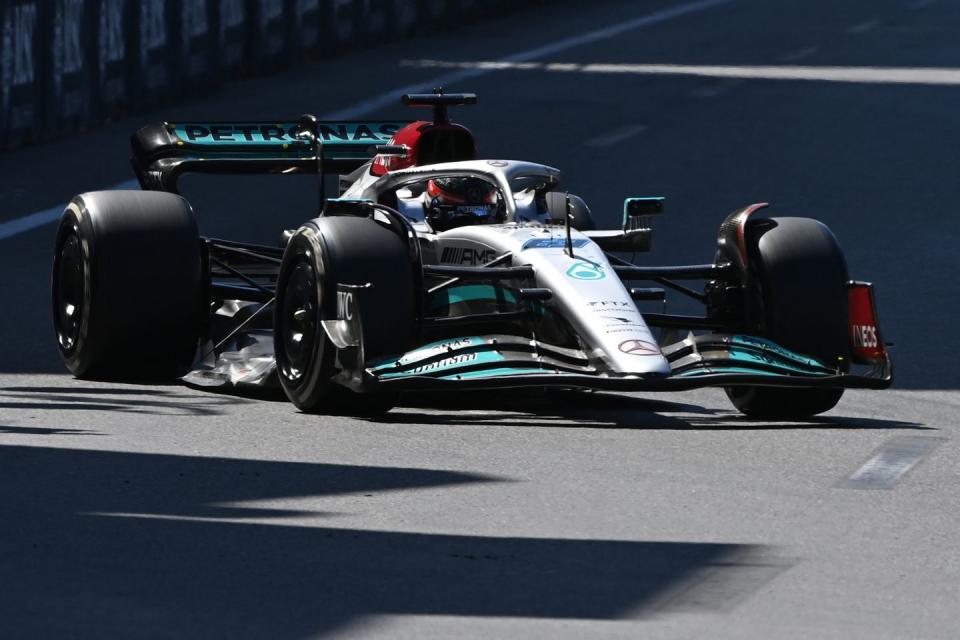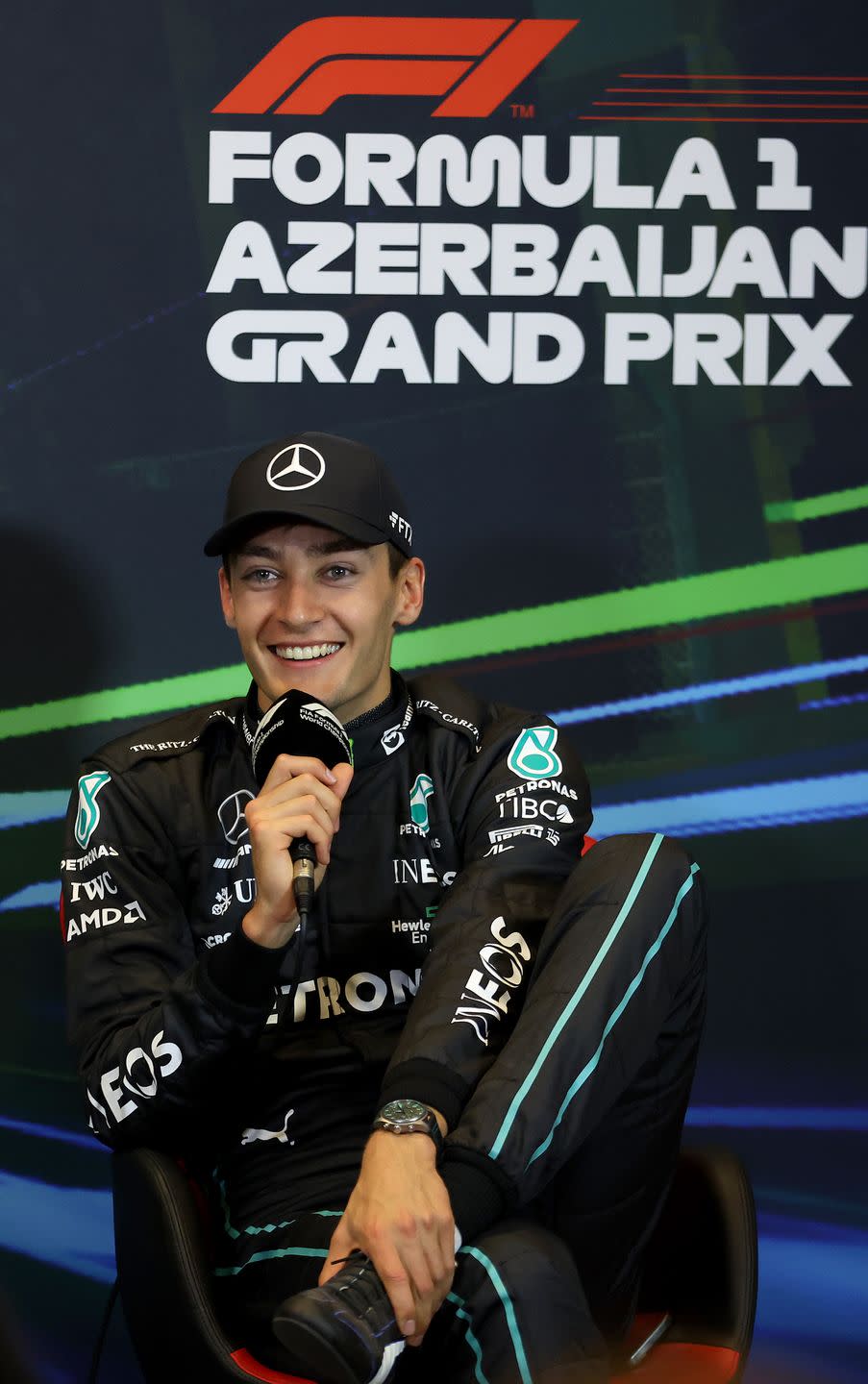Mercedes F1 Drivers Are Battered, Clearly Rattled After Bouncing in Baku

Mercedes’ Formula 1 drivers Lewis Hamilton and George Russell have had enough of bouncing while driving.
The W13 has been one of the cars most susceptible to the phenomenon called porpoising caused by the ground effect philosophy that has returned under the 2022 regulations.
The team thought it had ironed out the issues that was plaguing it earlier in the year, costing it valuable development time, as well as sending it down set-up dead-ends. That was most shown at the purpose-built smooth Barcelona circuit, which has an abundance of medium- and high-speed turns, and where Mercedes put in its most competitive display.

But at the low-speed bumpier street-based Monaco and Baku tracks it has returned, allied to general ride issues, as the team continues to learn about the car. In Baku it was particularly bad because of the lengthy full throttle section that runs to two kilometers.
Drivers George Russell and Lewis Hamilton made the most of things on Sunday, finishing third and fourth in Baku.
“Sore, that was the most painful race I’ve experienced, the toughest race I’ve experienced,” said Hamilton, who was running an experimental floor and rear suspension components.

“There were a lot of moments where I didn’t know if I was going to make it. One, whether I was going to keep the car on track as on the high speed I nearly lost it several times. The battle with the car was intense. And the last 10 laps…”
Mercedes boss Toto Wolff suggested Hamilton might even be too banged up to race next weekend in Canada.
Russell, who is a Director of the Grand Prix Drivers’ Association, was more vocal after qualifying.
“It’s brutal out there, being shaken to pieces, I can barely see where to brake as we’re bouncing around so much,” Russell said. “I don’t think we’re the only car, I think half of the grid are in the same boat, and frustratingly Ferrari seem to be in the same boat but they seem to make it work.
“I think it’s just a matter of time before we see a major incident. A lot of us can barely keep the car in a straight line over these bumps, we’re going around the last two corners at 300 kilometers an hour, bottoming out, you can visibly see on the tarmac, how close the cars are running into the ground. Yeah, I don’t really know what the future holds but I don’t think we can sustain this for three years or however long these regulations are in force for.”
The bouncing was more prominent in Azerbaijan than at other Grands Prix owing to the circuit characteristics.
Haas' Mick Schumacher suffered a loss of fluid that benched him from the first session because a clip came loose while Esteban Ocon quipped that he thought at one stage his helmet might pop off. But while Russell’s comments hold weight, particularly over the long-term health consequences of drivers’ heads violently shaking, others have pointed to extenuating circumstances.
Not every team is suffering. And set-ups can be altered to reduce the issue, mainly by raising the ride height, but this compromises performance. And last year teams rejected a solution proposed that could have reduced, or even eliminated, the phenomenon.
“I miss Barcelona and being able to drive down the straight with no problem,” quipped Hamilton. “I speak to other drivers like Valtteri (Bottas) and I’m like ‘bouncing?’ and he’s like ‘no’, wow, can you imagine how nice that would be! We’ll get there eventually. It is what it is, we accept the reality in which we’re presented.”
Mercedes can be buoyed by some Barcelona-style smooth and flowing circuits coming up--notably Silverstone and Paul Ricard--but next weekend’s round in Canada is likely to be a Baku repeat. It has to swiftly find a solution.

 Yahoo Autos
Yahoo Autos 